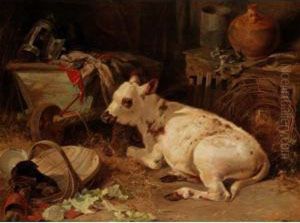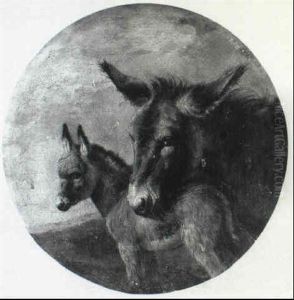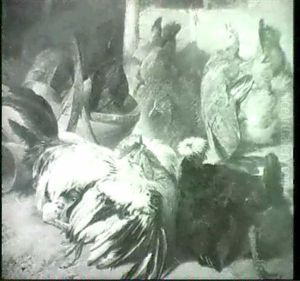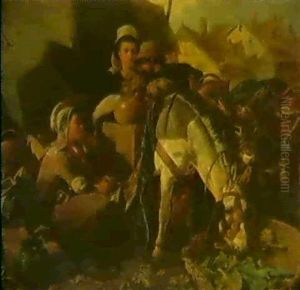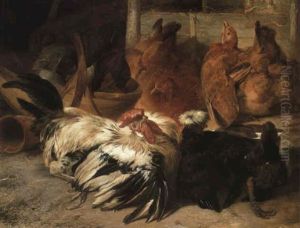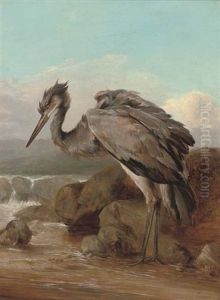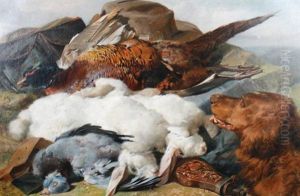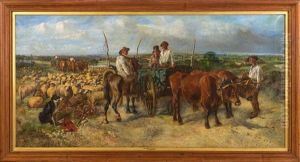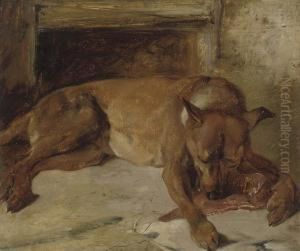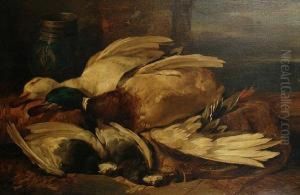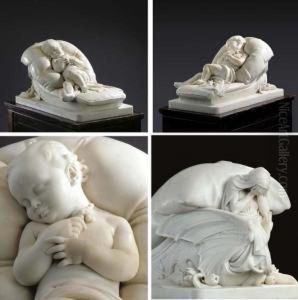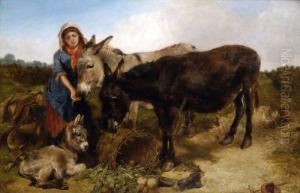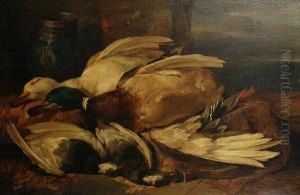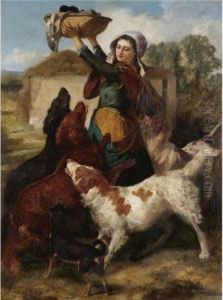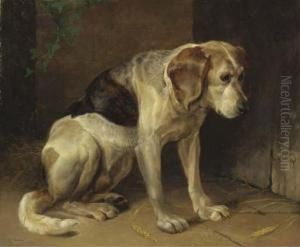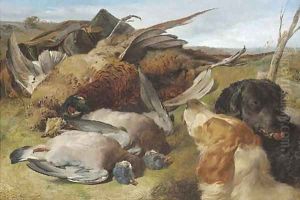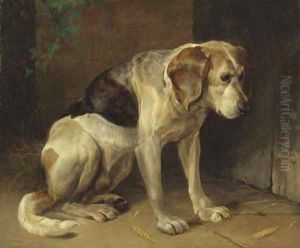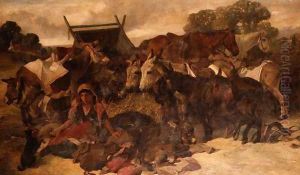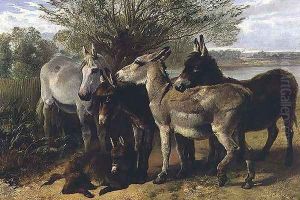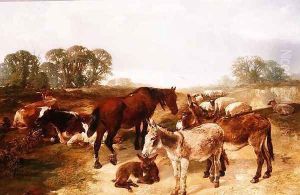Henry Weekes Paintings
Henry Weekes was an esteemed English sculptor, best known for his portraiture and works in marble. Born on January 14, 1807, in Canterbury, Kent, England, Weekes developed an early interest in sculpture. He began his artistic training as an apprentice to William Behnes in London, which provided him a solid foundation in the classical style.
During his career, Weekes became a notable figure in the Victorian art world. He was elected an associate of the Royal Academy in 1846 and became a full Academician in 1851. His reputation was significantly enhanced by his royal commissions, which included works for Queen Victoria and Prince Albert. Weekes's sculptures often reflected the taste and sensibilities of the Victorian era, marked by a focus on realism and intricate detail.
Notably, Weekes served as a professor of sculpture at the Royal Academy Schools, where he influenced a generation of British sculptors. His teachings and works emphasized a fidelity to nature and a refined technique. Among his notable works are the statue of Sir Robert Peel in Parliament Square and the effigy of Prince Albert for the Royal Mausoleum at Frogmore.
Weekes's contributions to portraiture and public art were widely recognized during his lifetime, and his works can still be seen in various public spaces and museums. He passed away on June 28, 1877, in London, leaving behind a legacy as a prominent sculptor of his time.
